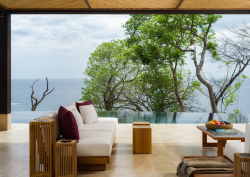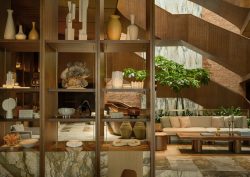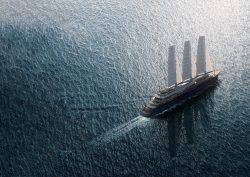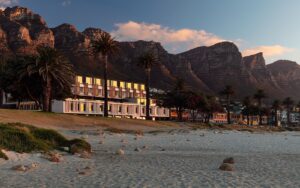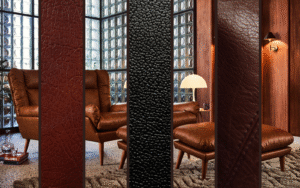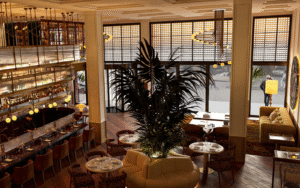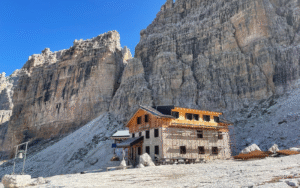Luminara is the newest addition to the Ritz Carlton superyacht portfolio, and has been making a splash as it set out on its maiden voyage. Design studio CHAPI Design is the creative force behind the public spaces gracing the decks – we spoke to Studio Owner Tatiana Sheveleva to find out more…
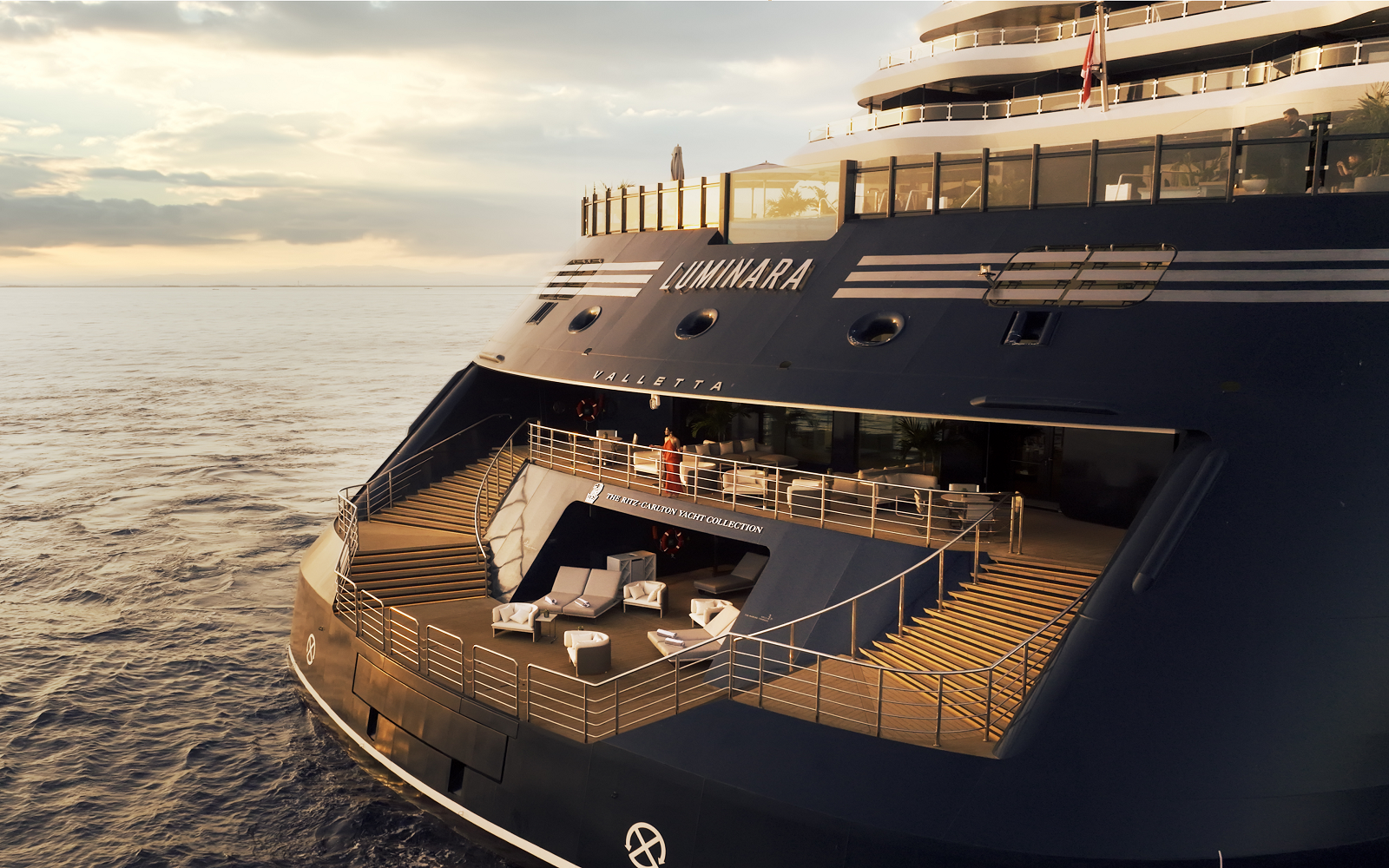
The Ritz-Carlton Yacht Collection represents a bold and luxurious expansion of the iconic hospitality brand into the world of bespoke cruising, and Luminara is setting a new benchmark for luxury yacht interiors. CHAPI Design, led by Tatiana Sheveleva, has played a pivotal role in shaping the public spaces of Luminara – through sculptural lighting and curved architectural elements that echo the sea’s fluidity, CHAPI curated public lounges and communal areas that feel simultaneously expansive and intimate, inviting guests into a graceful, contemplative environment that reflects the yacht’s namesake philosophy and the brand’s heritage of elevated hospitality.
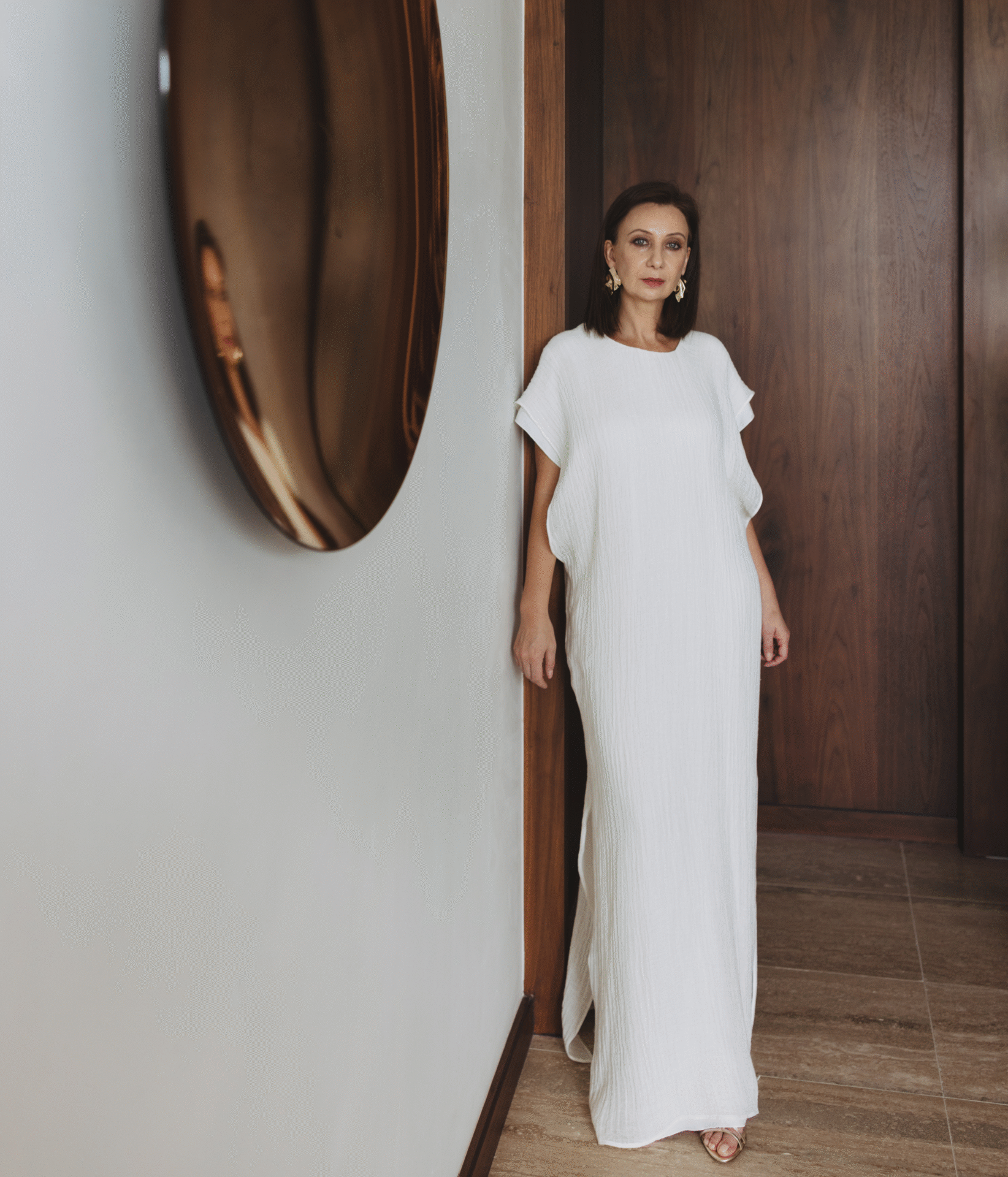
Image credit: CHAPI Design
Hotel Designs: What was the design inspiration behind the ship?
Tatiana Sheveleva: Luminara is the Latin word for ‘light, and for us, that the clear design directive. We treated light as a material: something to sculpt, reflect and also reveal. From the way sunrise grazes bronze surfaces to how moonlight dances across sculptural walls, every element was chosen to be in conversation with nature. We very much felt as if we were designing experiences that evolve by the hour, by the horizon.
HD: Your style as a designer in the luxury sector is to specify bespoke / custom FF&E – can you talk us through this process and the value of bespoke?
TS: Bespoke is the soul of true luxury. It’s about translating a story into form – something that mass production simply can’t do. For Luminara, we worked with artisans across continents: hand-blown glass, custom-sculpted seating, finishes that shift with the light. Each piece has a fingerprint. When guests touch a surface or settle into a chair, there’s a subconscious sense of rarity, of intention.
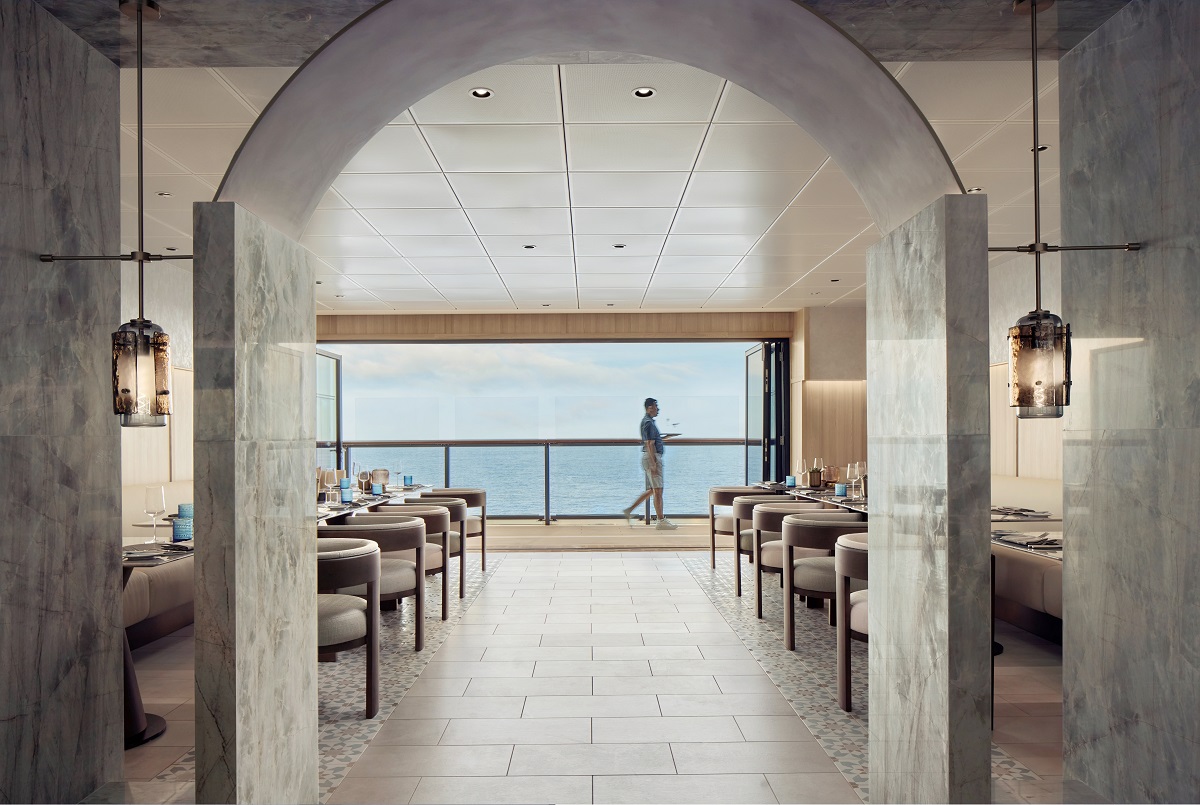
Image credit: Edgardo Contreras
HD: What does this project mean to you?
TS: As my first major project on water, Luminara was a chance to create something almost mythical – a floating world that moves people. Having worked on Ritz-Carlton properties on land, I already understood their language of quiet luxury and emotional resonance. But this project offered a new dimension: fluidity, unpredictability, poetry. I like to think of it as CHAPI Design’s love letter to the sea, to light and to emotion.
HD: What do you hope people feel when they arrive aboard Luminara?
TS: a quiet sense of awe – the kind that makes you pause and exhale. We wanted Luminara to feel like stepping into a dream you didn’t know you had: serene, sensual, and intuitively luxurious. Everything flows. It’s a space that welcomes you without needing to explain itself.
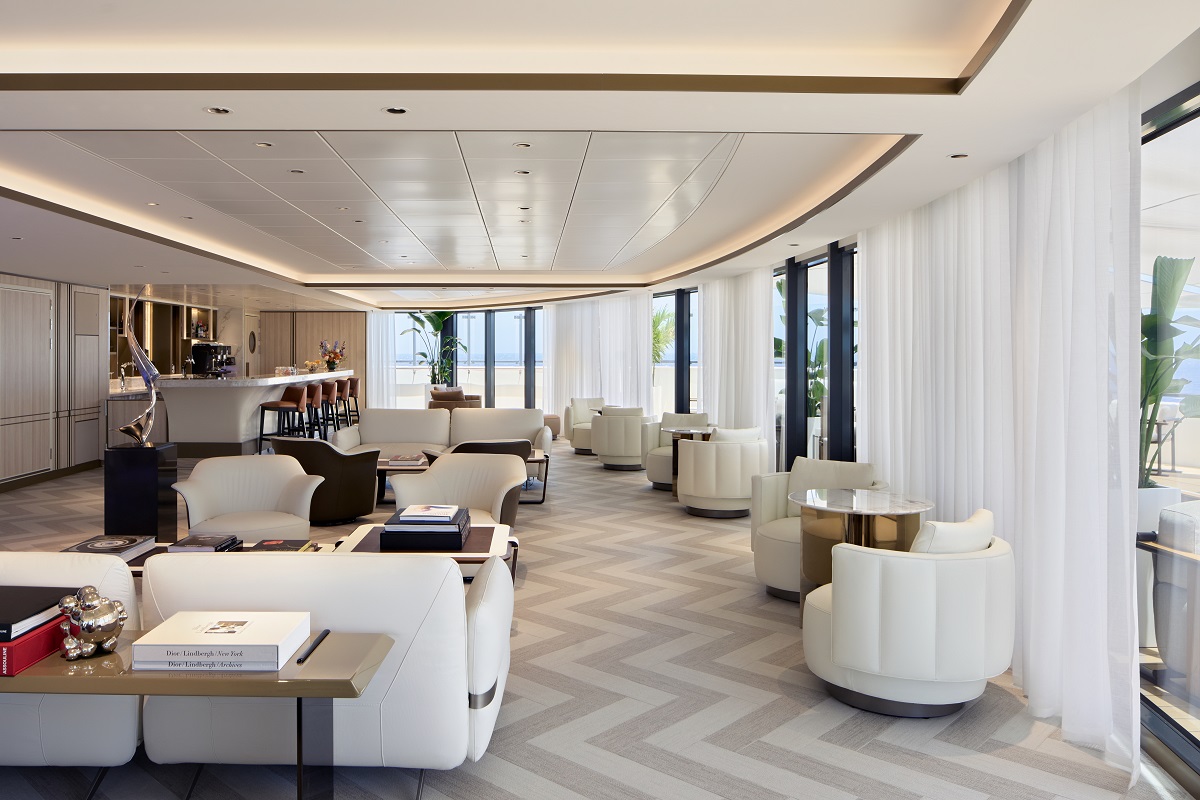
Image credit: Edgardo Contreras
HD: When designing for a luxury superyacht like Luminara, how do you create a sense of intimacy and comfort in public spaces that still need to impress on a grand scale?
TS: It’s about orchestrating contrast within constraint. On a superyacht, you’re working within very real limitations – technical regulations, weight, durability, scale – so every design move has to do more. That’s where layering becomes everything. We used lighting and acoustics, for example, to create moments within moments: a grand bar that still whispers, a gallery wall that feels personal.
HD: How does this project, on water, compare to Ritz-Carlton on land?
TS: The Ritz-Carlton ethos remains: service, elegance and soul. But here, we translated that into fluidity, into something that breathes with the ocean. The result? Less hotel, more reverie.
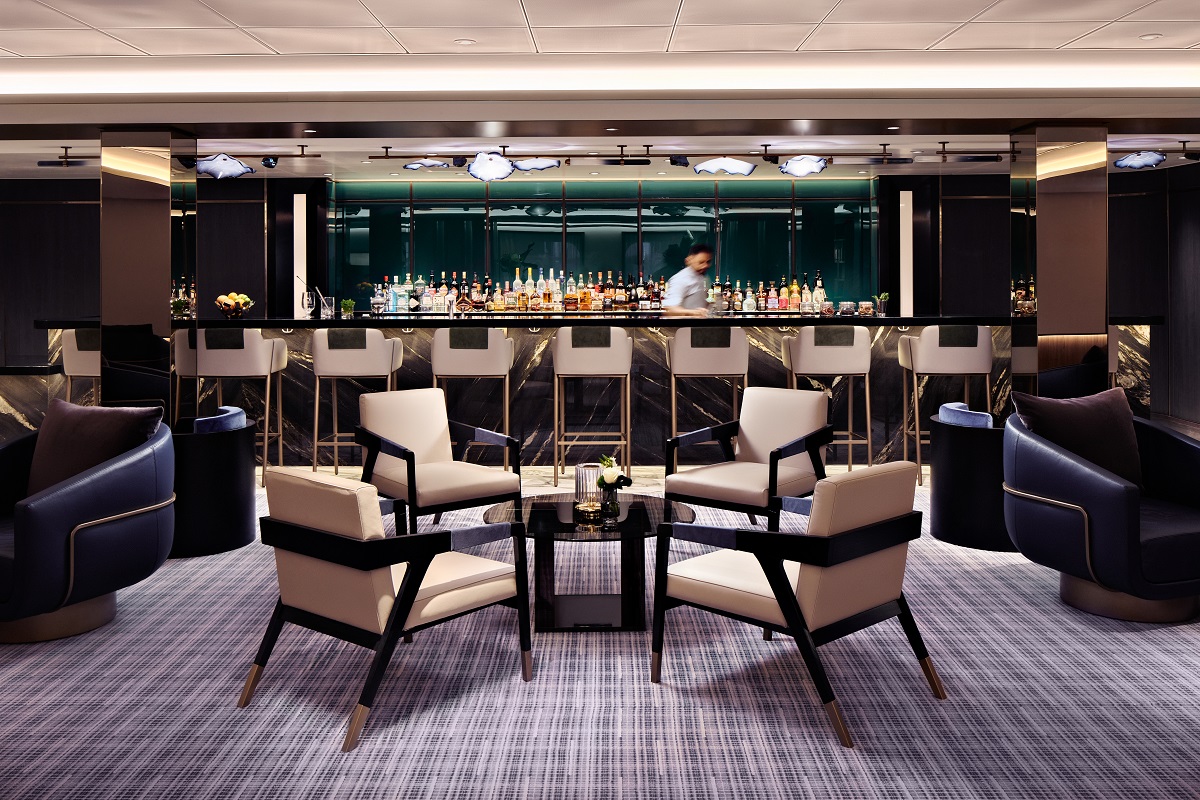
Image credit: Edgardo Contreras
HD: How do you strike a balance between timeless elegance and contemporary relevance in yacht interiors?
TS: Timelessness, which can be contemporary, is a feeling. It comes from authenticity – materials that age well, craftsmanship that tells a story.
HD: What part of the guest experience did you hope to surprise or delight them with — something they wouldn’t expect on a yacht?
TS: The Beach House on Deck 5!
HD: In your view, what makes a space ‘luxurious’ beyond just materials or budget?
TS: Emotion. You can have marble and gold, but if it doesn’t move you, it’s just noise. True luxury is resonance – it lingers. It’s the way a space makes you feel seen, soothed, inspired.

Image credit: Edgardo Contreras
HD: Were there any “aha!” moments in the design process — where something unexpected clicked?
TS: Designing Luminara was a constant dance between grand vision and the precise demands of a luxury marine environment. The name itself, “Luminara,” whispered promises of brilliance, setting an incredibly high bar for the integration of light. Initially, our lighting plans leaned towards elegant but conventional fixtures – exquisite chandeliers. But something felt… missing. It didn’t embody the spirit of Luminara.
The true “aha!” moment struck during a brainstorming session, ironically, while staring out at the sun-dappled ocean stretching infinitely. We realised light on a yacht shouldn’t just be there; it should move, reflect, and interact like the water outside. It wasn’t about adding decorative lights, but making the light itself the primary decorative element, a liquid sculpture flowing through the vessel. The name ‘Luminara’ ceased to be just a label and became our guiding principle, suggesting an intrinsic glow rather than external embellishment.
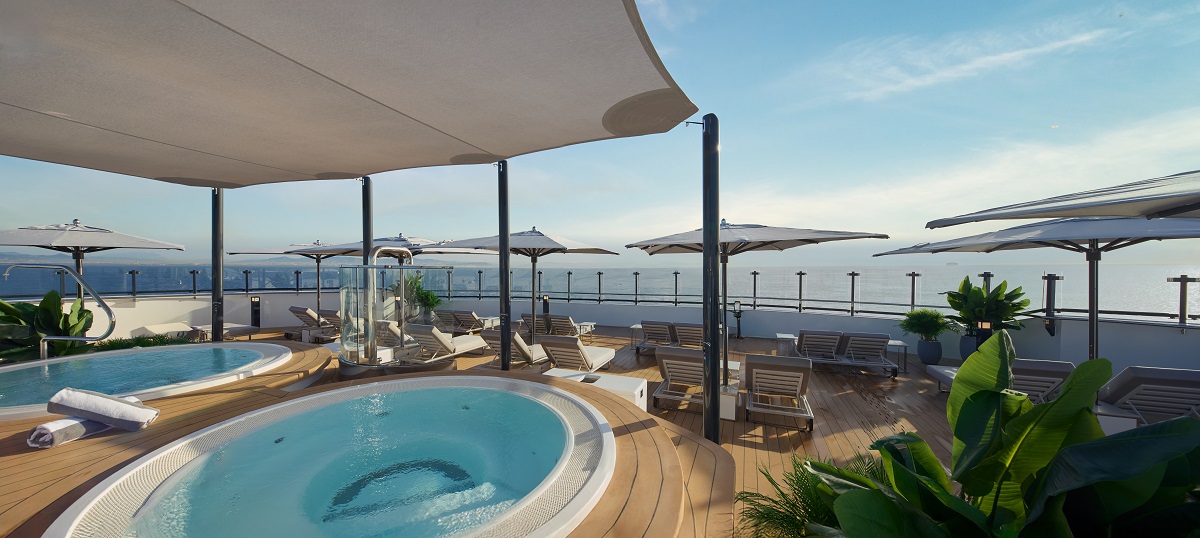
Image credit: Edgardo Contreras
QUICK-FIRE ROUND
HD: Which public space on Luminara would make the best backdrop for a fashion shoot?
TS: The spa!
HD: Finish the sentence: “Good yacht design should never…”
TS: … feel like a hotel in disguise.
HD: Describe Luminara’s vibe using three textures?
TS: Leather, velvet, and shimmery sheer.
Main image credit: Edgardo Contreras






